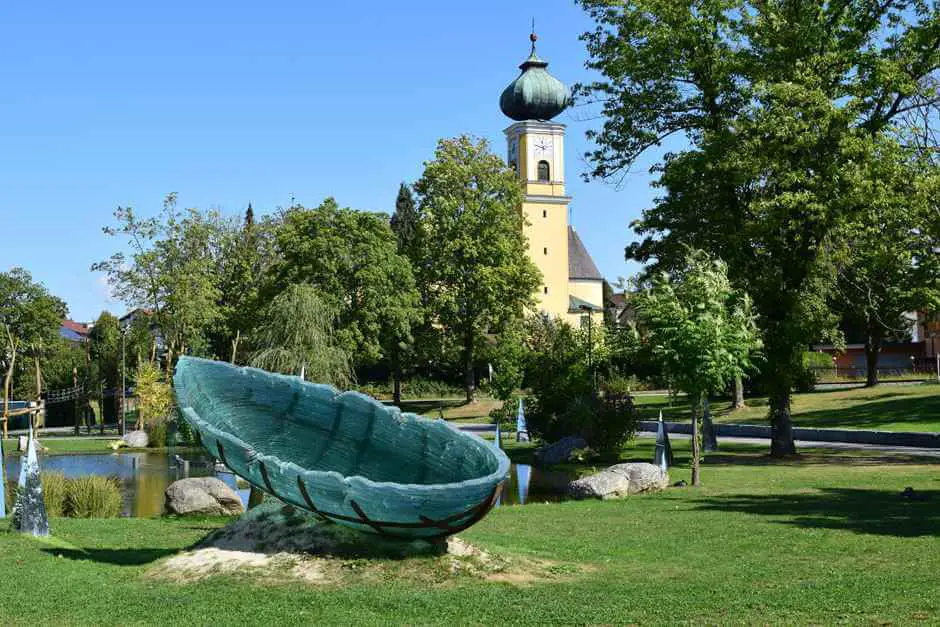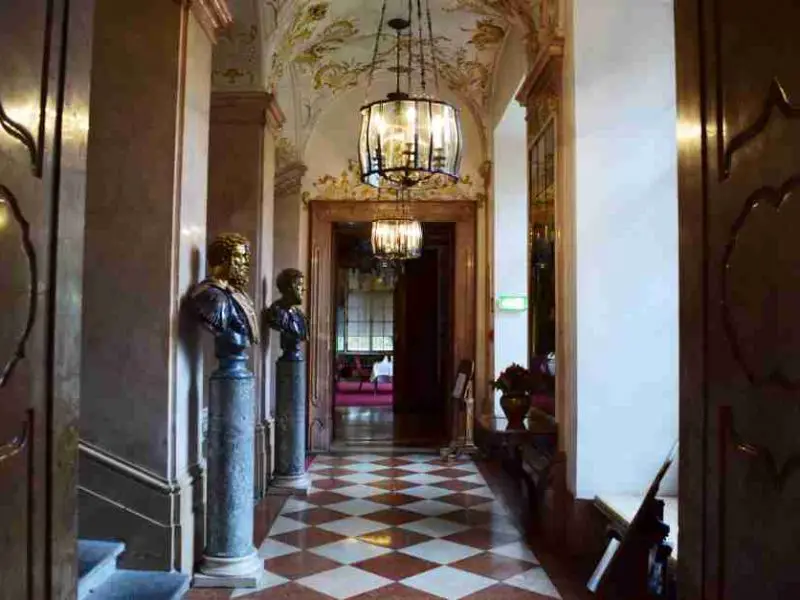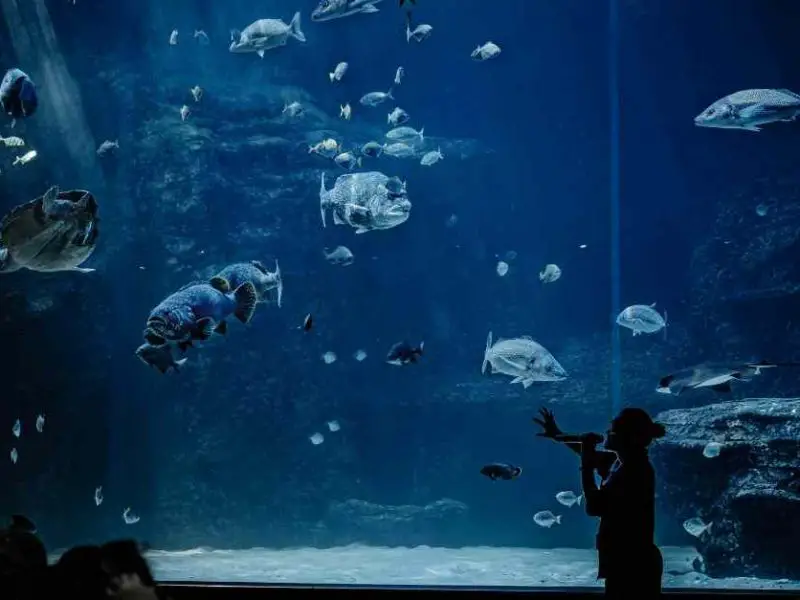The Glass Road in the Bavarian Forest
The Bavaria Glass Road stretches over a distance of 250 kilometers from Waldsassen to Passau. She runs through that Upper Palatinate via Neustadt an der Waldnaab through the Bavarian Forest to Passau. The route passes through several districts, including Cham, Freyung-Grafenau, Neustadt an der Waldnaab, Passau, Regen, Schwandorf, Straubing-Bogen, and Tirschenreuth. We learned more about Frauenau glass a few years ago at the town's glass museum. There are many places and opportunities along the Glass Route where you can learn about glass. It has been produced in eastern Bavaria since the Middle Ages.
Glassmaking tradition on the Glass Theme Route
Glassmaking in Bavaria is even older. The Romans were the first to produce glass in Bavaria. They brought glassblowers from Italy. Glassmaking in eastern Bavaria has been documented since the 13th century. Back then, craftsmen from Bayern Glass was first made in Glashütt near Sankt Englmar. Places ending in -hütt or -schleif in this region indicate a roughly 700-year-old tradition of glassmaking and finishing. Manual glassmaking has been recognized by UNESCO as an Intangible Cultural Heritage of Humanity.
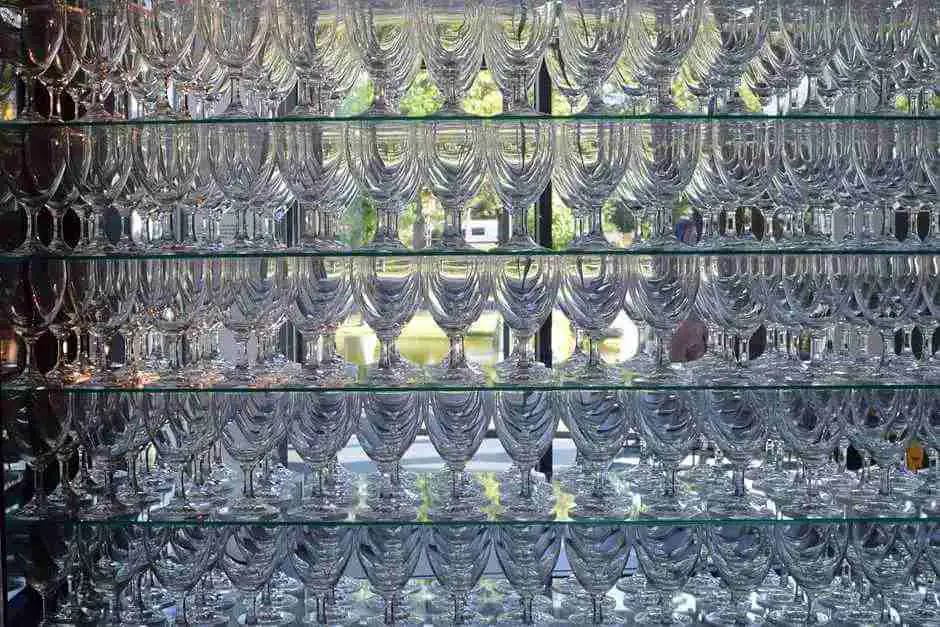
Glass art Bavaria on the Holiday Route Glass
This finally triggered the triumphant advance of glass manufacturers in Eastern Bavaria, whose products were soon in demand all over Europe. Initially, the glassworks in Eastern Bavaria produced everyday objects such as mirror glass, slug panes for windows, drinking glasses or glass beads for rosaries. As the skills of glassblowers increased, so did the quality of their glassware. Soon Bohemia and the border region in Bavaria were known for the quality of the glass art that their craftsmen created.

The Glass Street - what you can experience
Today, you'll find manufactories, shops, and museums dedicated to glass along the Glass Route. The Glass Route through the Bavarian Forest follows the region's glassmaking tradition. Those who take their time can explore glass in all its forms and, in some places, even try their hand at making it themselves. Glass is diverse.
Along the way, you can visit shops that sell glass for your home. Glass is also used for trophies. There is glass art displayed in parks or even in the middle of the forest. Glass plays a role in architecture. Stained-glass paintings and stained-glass windows are evidence of this. You can watch how glass is made and processed. There are also museums that provide information about glass and its various forms.
If you book one of these offers, we receive a commission, which we use to run this blog.
Watch the glassmakers at work on the Glass Art Road
In the glassworks, you can watch how the glassmakers shape spheres, glasses, and vases from the molten glass in the kiln. It's fascinating to see the skill with which they create enchanting shapes and forms by turning and moving the raw material. In the workshops, factories, and glass-cutting shops, glass artists turn it into truly personal works of art. They grind, polish, engrave, and gild the raw pieces that emerge from the kiln.
The East Bavarian glass industry is also known for its lead crystal. Several of its producers have won awards for their products or are even among the leading manufacturers on the global market.
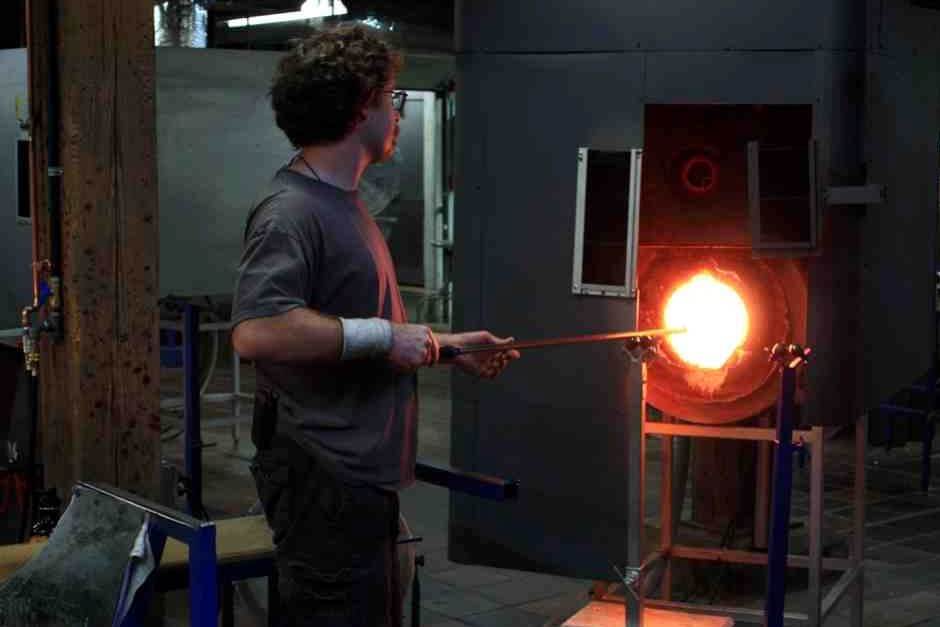
Sights along the Bavarian Forest Glass Road
There's a lot to discover along the Bavarian Glass Road. If you want to see it all, you'll definitely need time. Some of the highlights that await you include:
- the glass forest when it rains
- the glass maypole in Riedelhütte
- the glass ark on the Lusen
- the glass park in Frauenau
- The world's largest glass pyramid in Zwiesel. The pyramid consists of over 93.000 pieces of glass and reaches a height of about 8 meters.
- The largest wheat beer glass in Bodenmais. This is a world record held by Joska Kristall. Joska Kristall also holds several world records, including the world's largest wheat beer glass, the largest hand-blown beer stein, and the largest Christmas tree bauble.
- the largest hand-blown Christmas tree ball
- the sculpture garden in Arnbruck or
- the glass barn in Viechtach.

The Glass Museum in Frauenau on Glasstrasse in the Bavarian Forest
The Glass Route leads, among other places, to Frauenau, a town in the Bavarian Forest. Frauenau's glass art is the reason why a glass museum was established there. Since 2014, the museum has been sponsored by the Free State of Bavaria as a state museum for the history of glass culture. We visited it a few years ago. It showcases the development of glass production in the Bavarian Forest and at the Frauenau glassworks.
Frauenau Glass Museum
– Opening hours: Tue–Sun, 10am–17pm
– Admission: Adults 5 €, children free
– Address: Am Museumspark 1, 94258 Frauenau
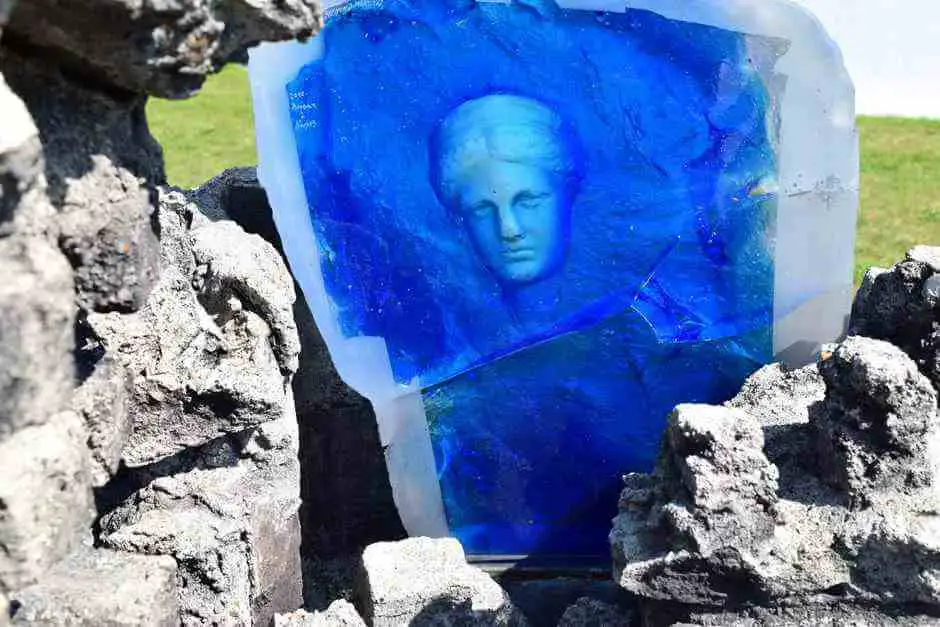
The Glass Ark at the Frauenau Glass Museum
Even in the town center, it's clear how important glass is to Frauenau. During our visit to the Glass Gardens of Frauenau in front of the museum, the Glass Ark is located by the village pond. It represents glass art in the Bavarian Forest. Between 2003 and 2005, it traveled through the Bavarian Forest National Park and the Bohemian Forest on the Czech side. The Glass Ark has become a symbol of glass art in the region. At 4,80 meters long and weighing three tons, this was no easy feat.
The Glass Ark stood on mountain peaks, in the wilderness of the Bavarian Forests, in church squares, and in village centers on both the Bavarian and Czech sides. It contributed to the understanding between people in the border regions and created new contacts. Today, the Glass Ark can be found in a wooden hand amidst the forest wilderness at Lusen, in a place where one can rest.
The shape and color of the glass ark give an idea of which works of art we will see in the museum. On a walk through the park we discover glass art, which testifies to the skill of the glassblowers in Frauenau. The sculpture park currently includes 31 unique glass sculptures by artists from various countries.
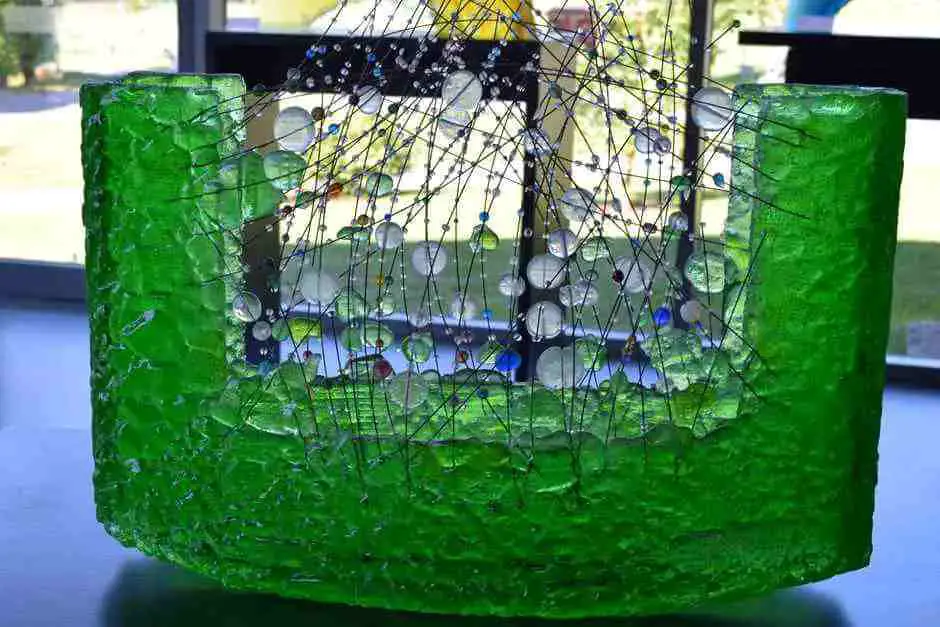
Tour of the Frauenau Glass Museum
Our tour of the museum begins with a glimpse into history. It quickly becomes clear that glass is more than just glass. It's art and culture. We learn how the Egyptians brought glassblowers from Mesopotamia. We follow the traces of the glassmakers through Roman times to the glass art of today. It's fascinating to see how the products evolve. From drinking glasses to lead crystal to glass decorations, we find everything in the museum's display cases.
Did you know that the shape of a glass is even important when tasting wine? In the reconstruction of a glass factory, I discover molds for glass. Grinding tools show the means by which glass is engraved. It is all the more astonishing how filigree the works of art are that result. Church windows as well as glass beads can be found among the exhibits.
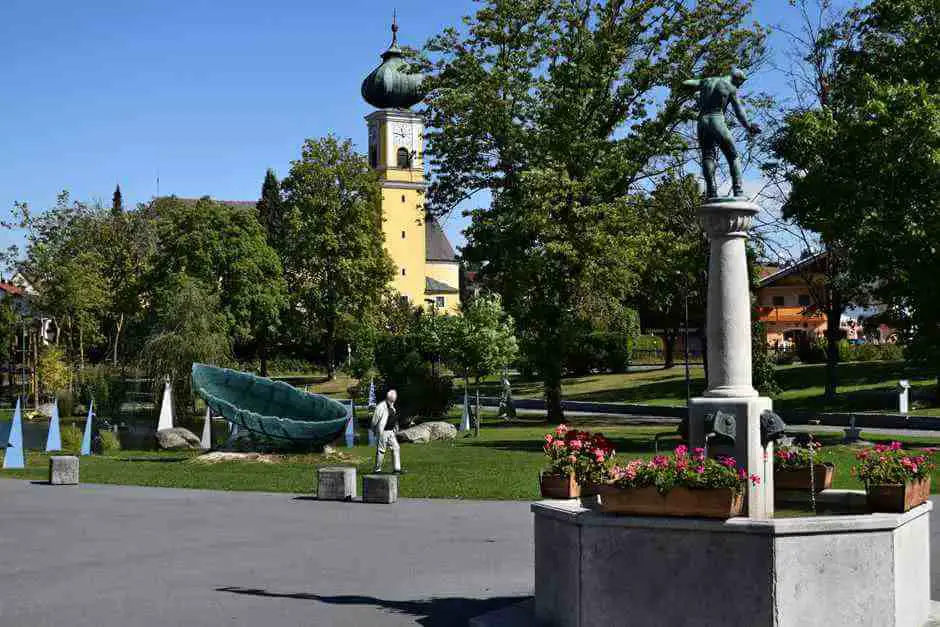
Glass museums in the Bavarian Forest on the Glassmakers' Route
Frauenau isn't the only town on the Bavarian Glass Route to boast a glass museum. You can find other museums dedicated to glass and its aspects here:
- The Glass and City Museum in Neustadt ad Waldnaab provides information about the glass history of the city, which has made a name for itself as the European lead crystal center.
- The largest collection of Bohemian glass can be seen in Passau.
- Plößberg is waiting with a replica of a glass furnace construction hut.
- In the Landestormuseum in Furth im Wald you can admire reverse glass paintings as well as hollow glass.
- In Viechtach you can watch live how the art object Venus machine by the glass artist Reinhard Schmid is created.
- Rain invites you into the largest private collection of snuff glasses.
- At the Berghof Gibacht in Waldmünchen you can also admire glass art.
- The Herrmann Glass Gallery in Drachselsried shows works of art by more than 150 glass artists from 30 countries.
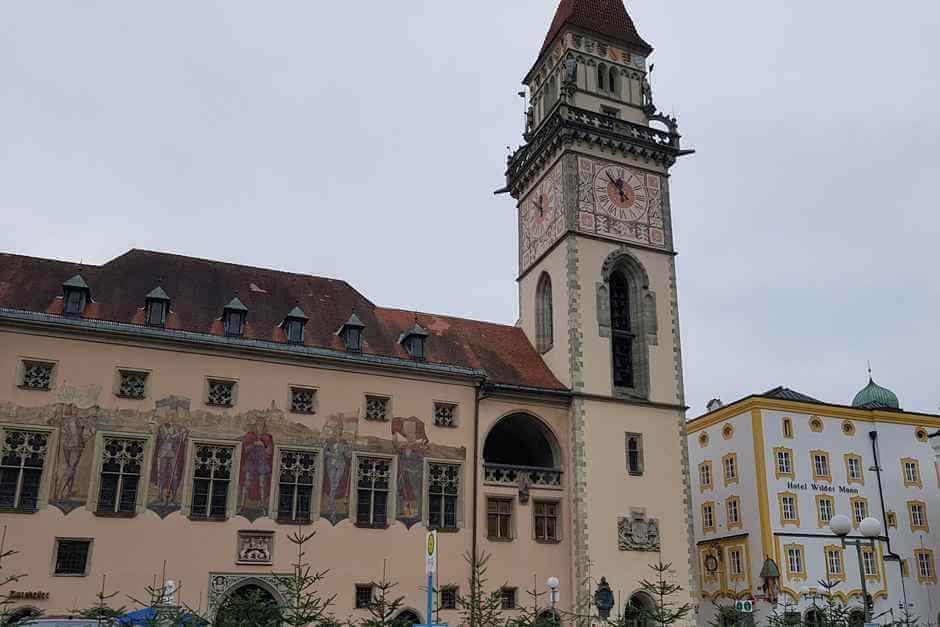
Glass art for visitors to participate in
Have you been inspired to try this traditional craft yourself on your tour along the Bavarian Glass Route? This is possible at the Bildwerk Frauenau Summer Academy. They offer workshops and events in which visitors can actively participate.
You can blow your own glass ball at Broken Glass Köck in Riedlhütte. There is also a gastronomic experience, glass demonstrations and a forest glass garden to visit.
If you'd like to delve deeper into the art of glassmaking, the Zwiesel Glass School might be of interest to you. For over 100 years, they've been training young people to become glass specialists. They offer courses in glassblowing, glassmaking, glass finishing, glass painting, and creative product design.
Glass adventure tour on the Glass Route in Eastern Bavaria
You can see how varied and diverse the raw material of glass is on a tour along the Glasstraße Bayern. Glassworks, glass artists, glass museums, and more will show you what can be made from this material. You'll be amazed at what can be created from it. Embark on a journey through the world of glass and be sure to save the tour for future trips.
By the way: you can also combine a tour along the Glass Road with a stay in a Wellness hotel in the Bavarian Forest . connect
If you book one of these offers, we receive a commission, which we use to run this blog.
Questions and answers about the Glass Road in the Bavarian Forest
What is the best time of year to travel along the Glass Road?
The Glass Route is a fascinating travel destination year-round, but depending on what you want to experience, careful planning is worthwhile. In spring and summer, you can enjoy the landscape of the Bavarian Forest in full bloom – perfect for hikes, visits to glassworks, or the occasional beer garden visit. Autumn, on the other hand, immerses the forests in a vibrant sea of color, promising particularly photogenic impressions. Winter has its own charm: many places along the Glass Route are atmospherically decorated, glassworks invite you to pre-Christmas events, and there are often special winter tours or Christmas markets that showcase glass and handicrafts. If you like it quiet and romantic, winter is a great time to immerse yourself in the world of glass.
Are there special tours or workshops where I can make glass myself?
Yes, many glassworks and museums along the Glass Route offer hands-on activities where you can get creative yourself. In workshops like the Joska Crystal World in Bodenmais or the Frauenau Glass Museum, you can blow or design your own small work of art under the guidance of experienced glassmakers. These activities are not only exciting for children but also offer adults a deep insight into this traditional craft. However, it's worth researching or making a reservation in advance, as some workshops fill up quickly or only take place at specific times.
Can I also travel the Glass Road by bike or public transport?
The Glass Road can generally be explored by bike, but you should be aware that the terrain in the Bavarian Forest is sometimes very hilly. However, for experienced cyclists with good stamina—or an e-bike—this is certainly doable. There are also special cycle paths and tour suggestions that follow the Glass Road. Traveling by public transport is a bit more complex, as some smaller towns are not directly connected. However, there are regular trains or buses between larger cities such as Zwiesel, Regen, and Passau. A mix of train journeys and short hikes or taxi rides can be a good solution if you don't want to use a car.
Which culinary specialties should I try along the Glass Road?
When traveling along the Glass Road, you can't miss typical Bavarian taverns, traditional bakeries, and rustic inns. Regional specialties such as roast pork with dumplings and cabbage, blood and liver sausage, or the popular Bavarian Forest trout are particularly recommended. Many cafés serve homemade cakes—including the famous Bavarian Forest cake with cranberries and nuts. What's particularly exciting is that some establishments combine culinary arts and glass, for example, with glass plate presentations or events in glassworks restaurants. This is a treat not only for the palate but also for the eye.
Are there any events or festivals related to glass that are particularly worth seeing?
Along the Glass Road, events centered around glass regularly take place – from markets to festivals to exhibitions. Of particular note is the "International Glass Art Symposium" in Frauenau, where artists from all over the world work live and present their works. The Glass Road Festival, which takes place at various locations, also offers a colorful mix of arts and crafts, music, and regional cuisine. In winter, Advent markets attract visitors with handmade glass jewelry and a festive atmosphere. So, if you're looking to add a cultural highlight to your trip, it's worth checking out the region's events calendar.
What is special about the Glass Road?
The Glass Route is truly special because it allows you to embark on a journey through the fascinating world of glass art in Bavaria. Along the approximately 250-kilometer route—from Neustadt an der Waldnaab to Passau—you can experience how deeply rooted the glassmaking tradition is in this region. In many small towns in the Bavarian Forest and Upper Palatinate, glass is still blown, cut, and finished by hand—some in family businesses with centuries of history.
What makes it special is not only the craftsmanship, but also the combination of culture, nature, and tradition. You can visit glass factories, get creative yourself, or simply enjoy the beautiful landscapes through which the Glass Road winds. It's a true journey through time – combined with modern experiences all about glass.
Which places are located on the Bavarian Glass Route?
The Glass Road leads through numerous towns in the Upper Palatinate and the Bavarian Forest, all of which have one thing in common: their close connection to glass art. Among the most famous stops are Zwiesel, considered a center of the glass industry, and Frauenau, a true highlight with its renowned Glass Museum. Spiegelau, Riedlhütte, and Regen are also located directly along the route and offer fascinating insights into glassmaking.
In Upper Palatinate, it's worth taking a detour to Neustadt an der Waldnaab, Tirschenreuth, or Waldsassen, where the glassmaking tradition is also deeply rooted. Many of these towns offer guided tours, museums, or workshops where you can experience firsthand how sand, fire, and creativity transform true works of art into reality. Each town has its own unique character – from traditional to modern, from industrial to artistic.
Is a visit to the Frauenau Glass Museum worthwhile?
Yes, a visit to the Frauenau Glass Museum is definitely worthwhile – especially if you're interested in art, crafts, or regional culture. The museum is one of the most important glass museums in Europe and offers an impressive presentation of the history of glass art – from its beginnings to the present day. You'll not only learn how glass has been crafted over the centuries, but also see impressive works of art from all over the world.
Particularly fascinating is the combination of traditional craftsmanship with modern glass art. The exhibition is lovingly designed and interactive—so you can not only observe, but also understand and participate. Furthermore, the museum is located in the heart of Frauenau's Glass Garden, a unique outdoor sculpture park with oversized glass artworks. This is an experience not only for art fans, but also for families and nature lovers.
Further links to the Glass Road Bavaria:
- Official Website
- Wikipedia
- History of the glassworks
- Glass in the Arberland
- Glass Barn
- Glassworks and glass artists in Zwiesel

Do you know this?
Source: own research on site. In any case, our opinion remains our own.
Text Glasstraße Bayern: © Copyright Monika Fuchs and TravelWorldOnline
Photos Glass Road Bavaria: © Copyright Monika Fuchs and TravelWorldOnline
